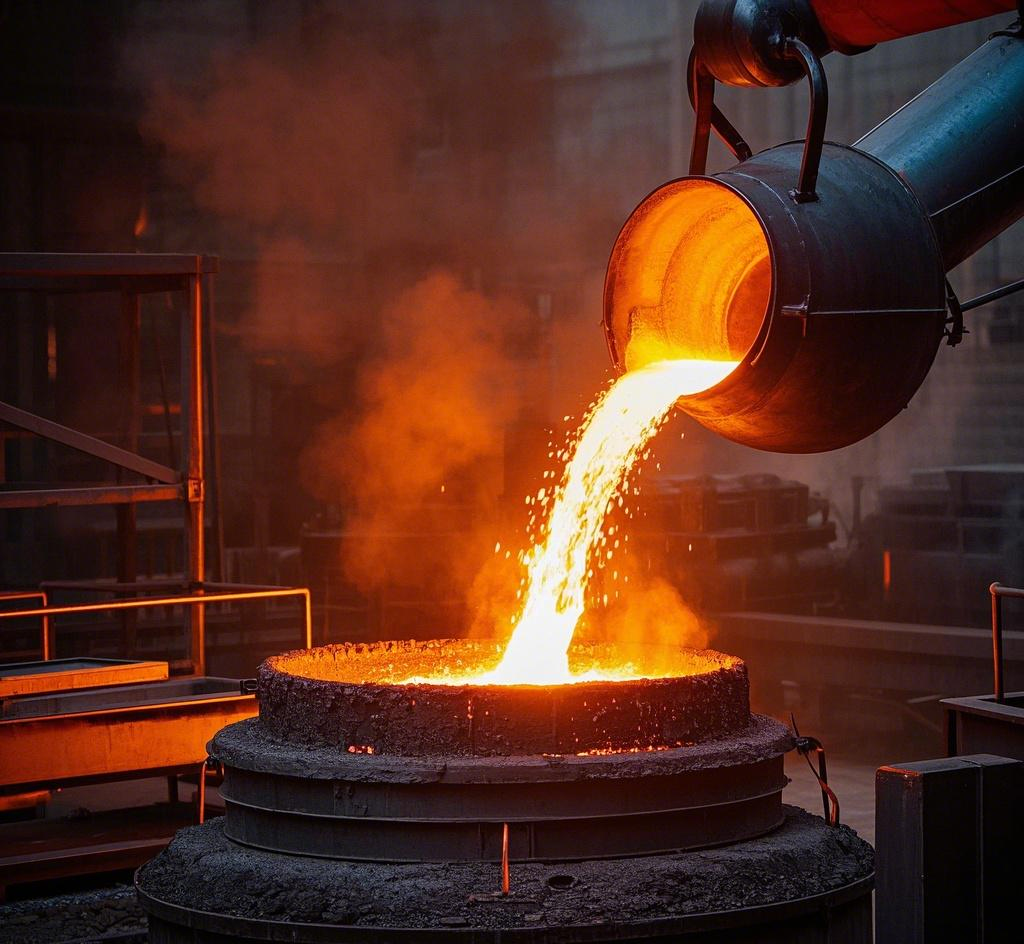What is Inoculation Treatment?
2025-01-02 16:19:31 hits:0

In the field of casting, inoculation treatment is an important process in the production of ductile iron.
I. Basic Definition and Principle of Inoculation Treatment
Inoculation treatment refers to accurately adding inoculants to the liquid iron melt after spheroidizing treatment. This operation is based on scientific principles and can effectively regulate the solidification process of the iron melt, thereby improving the quality and performance stability of ductile iron.
II. Effect at the Microscopic Level: Grain Refinement
From a microscopic perspective, the addition of inoculants can refine the grains formed during the solidification of the iron melt. Relevant research shows that for ductile iron without inoculation treatment, the average grain size is usually between 500 - 800 micrometers, while after inoculation treatment, the grain size can be refined to 200 - 300 micrometers. Finer grains make the internal structure of the material more compact, which not only enhances the strength of ductile iron but also enables more uniform stress dispersion when under force, avoiding stress concentration and improving toughness.
III. Practical Application Case: Automobile Engine Crankshaft
Take the crankshaft of an automobile engine as an example. It is a key component that bears huge alternating loads and has high requirements for comprehensive material properties. A certain automobile manufacturing enterprise found through comparison in the production process that when using ductile iron without inoculation treatment to manufacture the crankshaft, after a bench test simulating 100,000 cycles of engine operation, multiple fine cracks appeared, causing the fatigue strength of the crankshaft to decrease by about 20% and affecting the reliability and service life of the engine. However, when using ductile iron that had undergone inoculation treatment to produce the crankshaft, under the same test conditions, only a small amount of wear occurred on the crankshaft and the fatigue strength remained stable, ensuring the long-term efficient operation of the engine.
IV. Improvement of Graphite Morphology and Friction Performance
Inoculation treatment has a significant effect on improving the graphite morphology. It can make the graphite spheres more rounded and evenly distributed, reducing the probability of flake-like and vermicular graphite. A good graphite morphology can reduce the friction coefficient of ductile iron. For example, for automobile parts such as chassis transmission gears, the wear during meshing is greatly reduced. Actual tests show that compared with untreated ductile iron gears, the wear amount of inoculated ductile iron gears can be reduced by 30% - 40% under the same driving mileage, effectively extending the service life of the gears and reducing the maintenance cost and frequency of automobiles.
V. Operational Key Points: Selection and Timing of Inoculants
In actual operation, the selection and addition amount of inoculants are crucial. Common inoculants contain elements such as ferrosilicon, calcium, and barium. Different combinations of elements and content ratios are customized according to the material, part, size, and performance requirements of the casting. For example, for large mechanical castings with extremely high strength requirements, inoculants with a relatively high calcium content are often selected to promote grain refinement; for precision automobile parts that focus on toughness and surface quality, inoculants rich in barium are more suitable as they can optimize the graphite morphology and reduce casting defects.
The timing of inoculation treatment cannot be ignored. Usually, within a specific time period after the completion of spheroidizing treatment, the inoculants should be quickly and evenly added to the iron melt to ensure that they can fully play their role in the initial stage of the solidification of the iron melt. Otherwise, it will affect the final quality of the ductile iron.
VI. Summary: Significance of Inoculation Treatment
In conclusion, inoculation treatment, as a key link in the casting process, cooperates with spheroidizing treatment to provide good performance for ductile iron, enabling its wide application in fields such as automobiles and machinery manufacturing and promoting industrial products to develop towards high performance and reliability.

 en
en  fra
fra  de
de  ru
ru  ara
ara  gle
gle  it
it  jp
jp  kor
kor  th
th  zh
zh 


